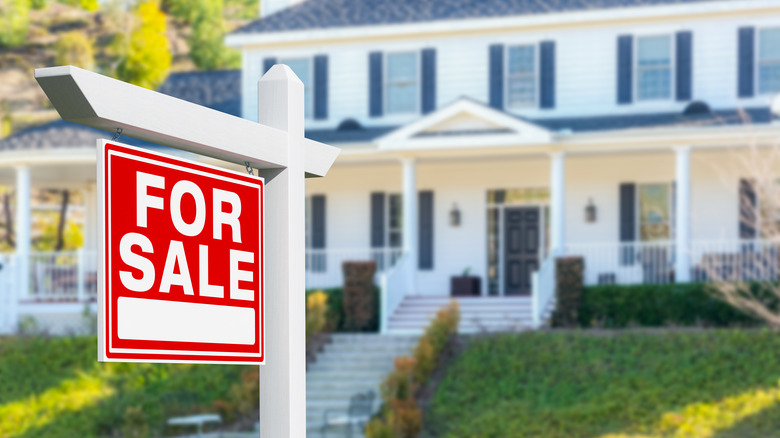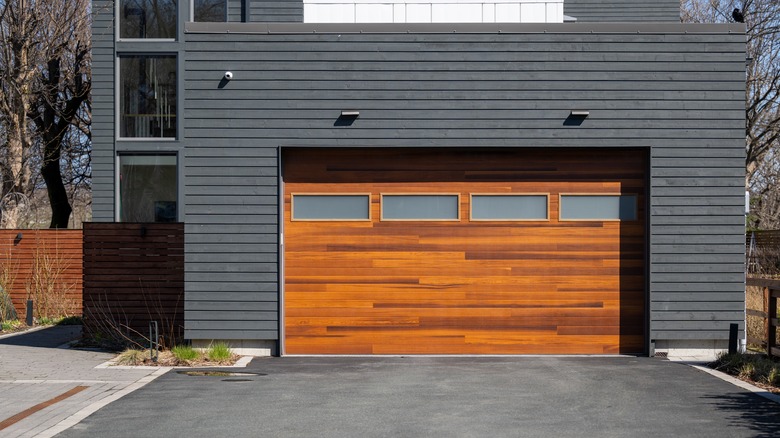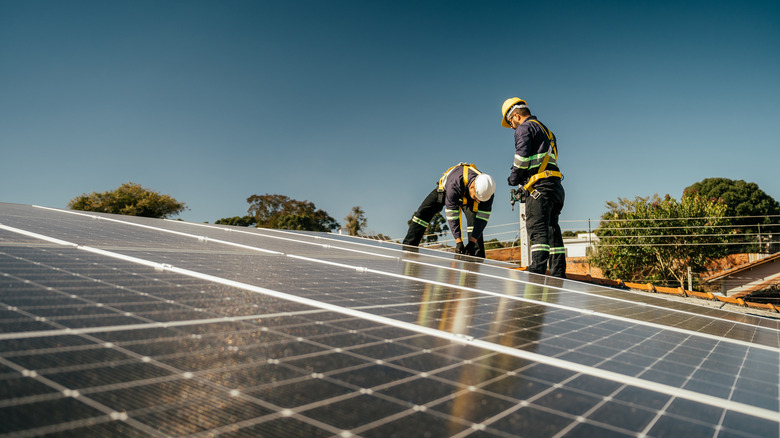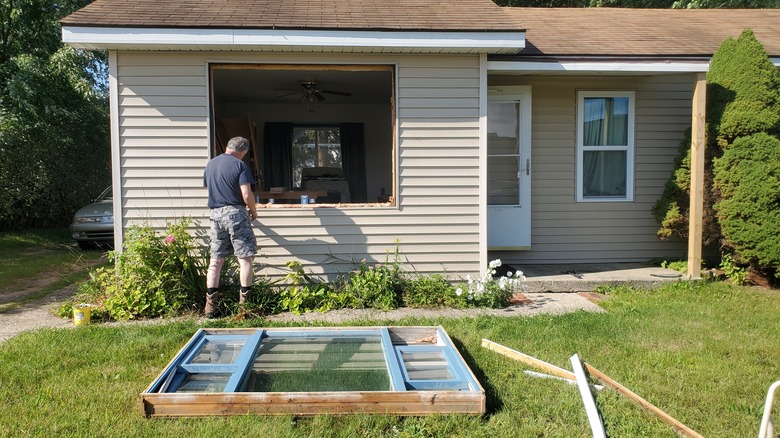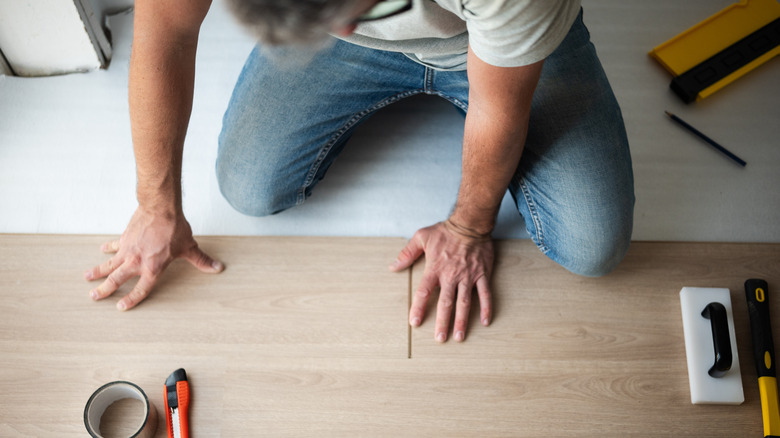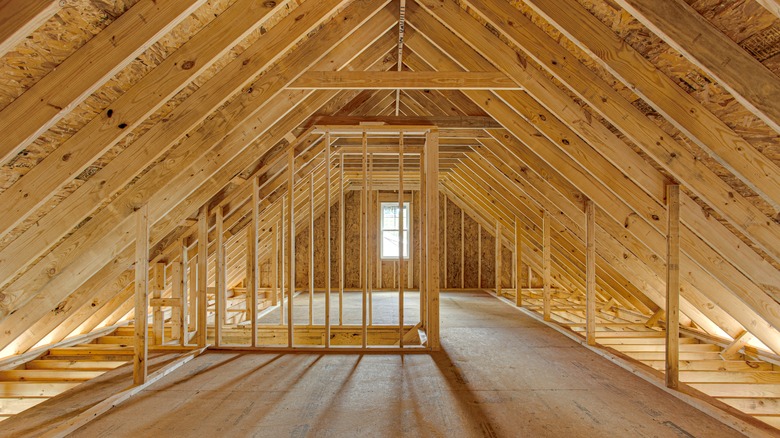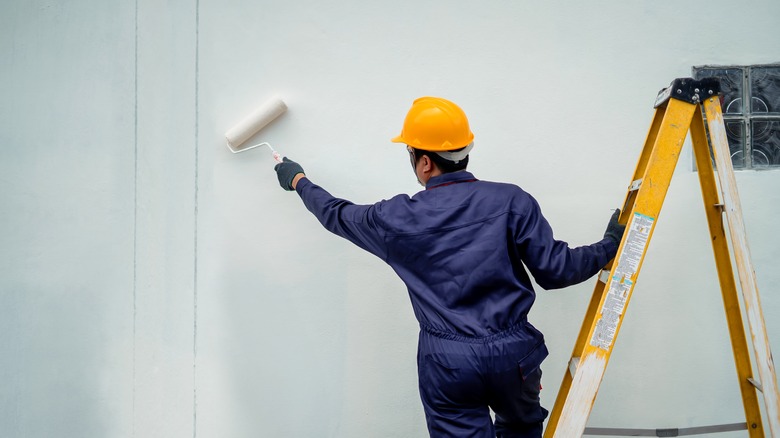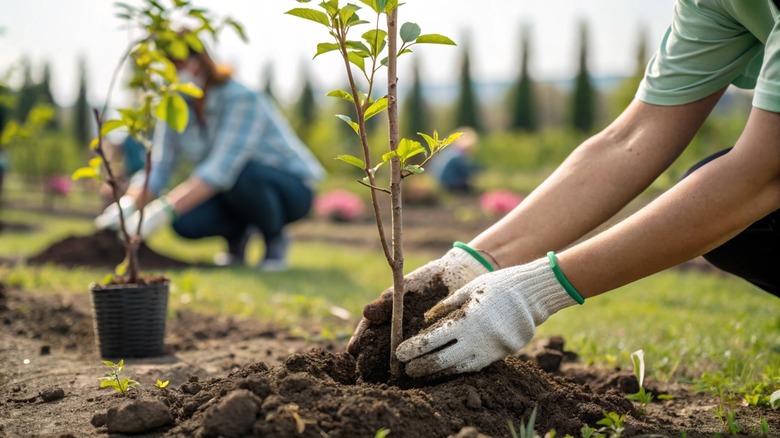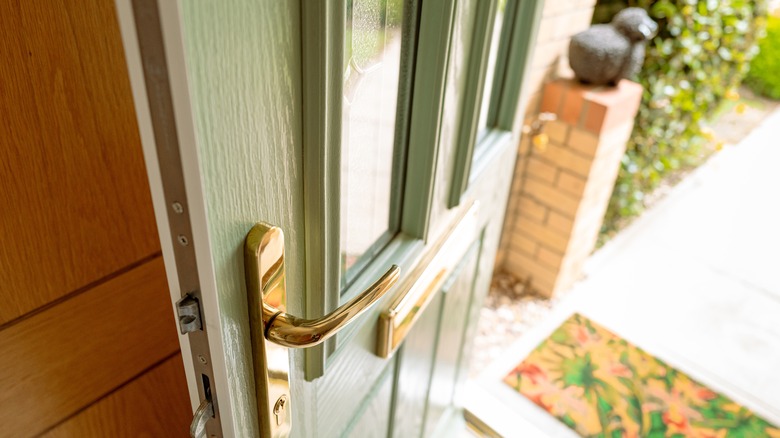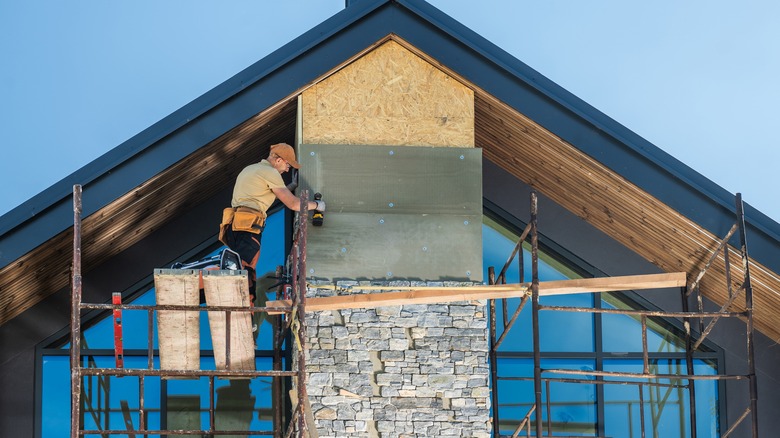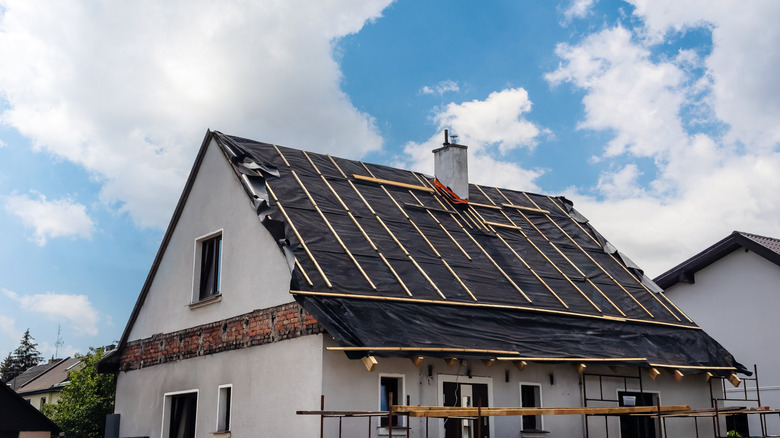Home Upgrades That Can Actually Increase Resale Value
Most homeowners will see their property as a constant work in progress. Whether you live in a small space or one that features a sprawling floor plan, a home is an ever-changing environment designed to support the lifestyle you hope to lead in it. This means that as you age and your needs change, the home will often be altered, as well. Young families see great value in renovations, in particular, since the younger years of a child's life come with many stylistic eras and a frequently shifting set of needs for the space. The result is a potentially busy schedule of DIY and professional upgrades and renovations that will help maximize your use of the household.
But there are other reasons to consider a home upgrade. Many people looking to sell their home — or those who anticipate that their stay in a particular city or neighborhood is temporary — will have their eyes on renovation options that bring back additional value to the property. Some of the worst financial value comes from renovations like the installation of an in-ground swimming pool or bathroom remodels. On the other hand, numerous investments you can make to improve your home actually tend to increase its value ahead of a listing. These home upgrades offer some of the best returns for your investment. Some are even fairly simple updates that you might be able to handle on your own, tilting the value swing even further in your favor.
Garage door replacement
In a Zonda report from 2024, replacing your garage door was found to be the most cost-effective home improvement project a homeowner could tackle. The average cost was around $4,500 while the improvement averaged a resale value of $8,751. This places the project's recovered costs at 194%. Curb appeal is a big deal in the renovation world. If you are looking for improvements that can specifically increase your resale value, starting with forward-facing updates is a great option.
The garage door occupies a significant amount of visual space stretching across the front of your home. An old and perhaps even rusted or damaged garage door negatively impacts the first impression your home makes on potential buyers. As a result, making this singular swap can ultimately generate a major improvement in the level of interest your home enjoys when you listed on the market. A new garage shutter isn't just an aesthetic change, though. This improvement can also help with energy efficiency and even safety in the home. You'll get the best of both worlds if you're installing a new door in place of an old-style opening solution, however. With such a significant value swing up for grabs, this can be a great starting point for a homeowner looking to infuse their property with something extra ahead of a sale.
Energy efficiency improvements
Improvements that change the energy efficiency rating of your home can be serious winners. Energy efficiency improvements aren't just about solar panels but a solar array on your roof can be a significant step in the right direction. In this regard, solar panels tend to pay for themselves in roughly eight to 10 years. Your solar installation may also be warrantied for up to 25 years, meaning you won't have to worry about recouping your upfront costs under most circumstances. Allowing time to run its course is all that's required in order to break even and then start reaping the benefits. Whether you install solar panels and then list your home for sale or you allow the installation to offset your electricity costs for a few years first, this improvement offers a great way to boost your resale value. Generally, solar panels are rated for a lifespan of up to 50 years. This means that even if you wait the to totally recover your upfront costs, there are still multiple decades of use left in the panels for a prospective buyer to extract value for themselves.
Other improvements like a smart thermostat or updated insulation around the home can be similarly strong selling points when listing your property for sale. No one wants to live in a cold home through the winter, and so new installation offers a significant level of peace of mind to someone considering your property for their future. New insulation will typically reduce air conditioning costs by about 15%, offering a big draw for interested shoppers.
Window replacements
Window replacements are one of the first options you might consider when trying to get ahead of a potential problem in your home. FBFS notes that a window replacement averages a cost recovery of 68.5%. This means that you might not ultimately improve the sale price of your home, but even so this investment may not be avoidable under certain circumstances. Windows are rated for a lifespan between 15 to 40 years, but this ignores improvements that have taken place in the technology.
Modern windows are vastly more energy efficient than some window installations crafted even a decade ago. New windows are superior when it comes to both keeping heat in when it's cold outside and preventing heat buildup in the house when the sun is blazing overhead in the summer sky. Moreover, all this is to say nothing of the impact resistance that's built into modern windows, preventing extreme levels of damage from natural disasters like hurricanes and tornadoes. If the windows on your home are particularly old, you may have no choice but to invest in an update in order to attract buyers. Fortunately, a recent window refit can act as a potent selling point and value addition.
Floor installation or refurbishment
The floors in your home can ultimately become a sticking point in whether the property sells quickly or languishes on the market. If your home features wall-to-wall carpeting throughout much or all of the property you'll almost certainly want to tackle a flooring update (but skip laying new carpeting). Carpeting ages poorly, and collects debris and smells from everyday life. Carpet gets worn down and beaten up, creating a visual element that can easily make the property look a bit run down. A good alternative is laminate flooring. Laminates are an ideal choice for those looking to make an immediate impact at a reasonable price. They're often fairly easy to install, as well. For context, when moving into my current home, I laid laminate flooring in three downstairs rooms with my father-in-law. The two of us put down the whole thing over two weekends, not including the time it took to rip out and toss the old carpeting. Paying a contractor to do the job would have doubled the cost, and in truth the task really wasn't that difficult.
For those with true hardwood floors, you'll likely want to invest in refinishing services. This isn't one that I've engaged in personally, but with a bit of research and the right sanding equipment rented from your local home improvement store it might be within plenty of homeowners' wheelhouses, too. Hardwood floors are a premium feature that can enhance a home's resale value, but if they're scuffed up and lack the shine of an installation that's been cared for, the asset can turn into a hinderance.
Bedroom conversions: Attics, basements, garages, and beyond
Bedroom conversions are a common choice for homeowners who are growing out of their property in its current format but don't yet have the means or motivation to move. Homeowners who love their neighborhood and community might consider retrofitting their property to better meet their needs in the same way that a homeowner with a low mortgage rate might be hesitant to pick up stakes and sell, even if it would mean a substantial quality of life improvement. Whatever your reason for exploring the bedroom conversion opportunity, there's likely one or more areas of the house that can accommodate this change.
Many homeowners have an attic. Your home might have substantial space or just enough room to add a single bedroom or office area. Another option lies below your home. If you don't have enough square footage up top or lack an attic altogether, your home likely has a basement or some other deep crawlspace beneath the floorboards that might accommodate this enhancement.
Alternatively, you might look to the garage or perhaps even consider breaking ground on an extension that pushes into your back or side yard to add new floor space to the home. No matter how you look at it, converting unused space within your home into livable square footage often generates substantial interest in the property when it gets listed and it can return in nice profit, too. Attic bedroom conversions deliver an average of 93.5% cost recovery, according to Fortune Builders while turning your garage into livable interior space can add up to 10% to your homes value.
Interior painting
Painting the inside of your home is a great way to revamp the energy and aesthetics of the living space. It's often suggested that you should repaint your property on a regular basis, regardless of your intention to stay in the home or sell it. Repainting every few years gives you the ability to add new personal touches and cover over wear and tear that takes its toll on a property. Painting allows you to find and fix dings and dents. Even if you aren't looking to fix these kinds of damages alongside your new painting task, updating the color allows you to add vibrancy to a home and stay up with trends and contemporary tests. A powerful way to sour potential buyers on a property is to list it with bold and old color palettes dominating the walls.
Angi reports that painting the interior of your home yields an average return on investment of about 107%. This improvement can add up to $16,050 in resale value all on its own according to research from the outlet. Those with the keen eye and diligent hand might want to spend a week shifting furniture around and painting on their own, but you'll generally enjoy the best value in this project space by hiring a professional. It'll cost you a little more to go this route, of course, but professionals are able to paint entire houses at a rapid pace that DIYers simply can't match. Moreover, the precision detail work that they bring to the table is unparalleled.
Outdoor living improvements beyond the deck
Your outdoor living space can be a real value enhancer. Decking elements often bear the brunt of negative attitudes toward upgrades that focus on the exterior, but the reality is that your decking can actually provide an 89% average return on investment. This means that a new installation that creates outdoor living space can be a valuable change if you are planning on staying in the house for a little while longer. Decking elements don't tend to recover their full cost even as they add new thematic living space, so investing in this particular improvement isn't worthwhile if you're seeking out additions that will help flip a house or otherwise prepare it for the market.
Deck space isn't the only option available to homeowners seeking exterior renovation opportunities though. Essential landscaping changes like planting new bushes, adding a tree or two, or updating hard landscaping like walls and walkways can improve your home's value by up to 12.7%, according to Center Street Lending. The result is a beautified space that can make your home feel much more inviting. Whether you're tackling in the front or back, making these kinds of improvements adds substantially to the aesthetic value that your home brings to the conversation. Front yard landscaping is particularly useful ahead of a listing, however. This introduces not just a layer of beautification but also a curb appeal update that can dramatically enhance the level of interest your property receives from perspective buyers.
Front door replacement
Replacing your front door is one of the best renovation projects you can tackle. The value you'll get from this update comes in multiple formats. First of all, if you invest in a steel front door you can expect to enjoy an average return on investment of 188%, according to CNBC. Opting for a fiberglass door brings an average of 97% return while a wood alternative yields 55% back in your pocket. Steel doors appear to be all the rage on the real estate market today. This upgrade brings a tactile securitization to the fore. When prospective buyers step into your entryway they immediately know that this element is durable, sustainable, and provides solid security marks for the family that lives within. It helps that steel doors also bring a unique visual element into the picture.
There's also a practical benefit to making this change. Unlike renovations that focus on rooms or other elements of the house, swapping out your front door for a new installation takes a few hours. There's generally little need to shut off the power or interrupt water services, and you won't have to live with the mess of a renovation project that tends to dominate more substantial changes. Those with a bit of know-how might even be able to install their own front door replacement, further reducing the cost of this enhancement.
House siding, and specifically a stone veneer installation
House siding isn't cheap. It's an upgrade that only serious investors might consider making because the risk is potentially great. Zonda notes that the cost of stone veneer siding runs the average renovator over $11,000. That's quite a chunk of change, to be sure; yet this is one of just three home improvement projects that the outlet pegs with an average cost recovery rate above 100%. Replacing your siding in this manner averages a 153% return, making it a potential windfall opportunity for a homeowner looking for a high impact modernization project that can dramatically add value to the bottom line.
It's important to keep in mind that house siding is an aesthetic improvement. This is particularly true for stone veneer additions. Not every buyer will be interested in a home that features this kind of visual element. Therefore, you may lose some interest when listing your home on the market with a new stone veneer façade. Similarly, if this isn't a common stylistic choice in your area then it might not be a worthwhile upgrade because the first impression it creates might be a little bit too jarring. However, your local market is a unique environment and there's an undeniable magnetism of the look and feel of a stone veneer. It's entirely possible that this can be a worthwhile update both to satisfy personal tastes and as a purely financial enhancement that helps bring home additional value.
A roof replacement
Your roof is a key component in establishing your home as a genuine house. Without a roof, your property is not safe from the elements, and it may even become worthless as a financial asset if you put off a repair for too long. That's obviously taking things to the extreme, but the point is certainly valid, and that's why so many buyers are adamant about inspections that cover the integrity of the roof. A home sporting a shoddy top is one that will absolutely require a sizable investment in the near future, and so buyers will want to shave a notable figure off the sale price if they know they'll likely be re-roofing the home. The average roof enjoys the lifespan of about 25 to 50 years, but this can be extended by using more durable materials or contracted significantly through bad luck for a lack of maintenance to keep this critical element in good order.
You can expect a return of about 70%, on average, when investing in a roof replacement. However, this is a home renovation that has far less to do with choice and hinges almost completely on necessity. No homeowner will invest in a new roof unless they absolutely have to. As a seller, you might know that the roof is on its last legs and offer alternative pricing models that include selling the property as it is or shouldering the burden of replacing the roof yourself before transferring ownership. The reality is that replacing your roof may be a non-negotiable investment ahead of a sale.
